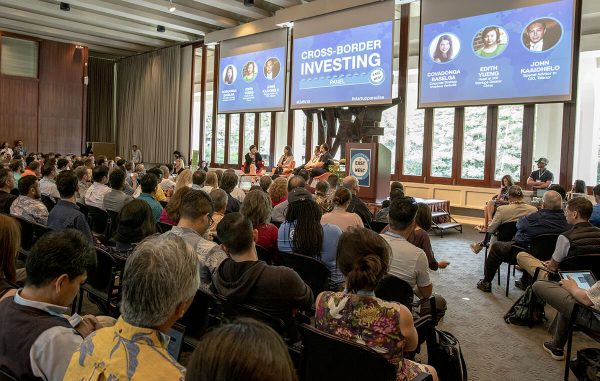Where is Innovation Coming From: The West or the East?
By Tiffany Hill, Medium
Posted on January 11, 2019
When you think of Silicon Valley, oftentimes technology and innovation are the first things that come to mind. In the U.S., the southern San Francisco Bay region has long been considered the hub of disruptive technology and development — along with New York City, Austin and Boston, to lesser extents. But these days, America isn’t the only one in the limelight when it comes to innovation and venture capital development.

“Increasingly we (are seeing) native, homegrown innovation from the East such as the super app WeChat, and startups from Asia outgrowing their counterparts in the U.S., like Tiktok or Meitu,” says Elisa Chiu, the founder and CEO of Anchor Taiwan, an entrepreneur immersion program. “China has quickly evolved from being the copycats that localize, to coming out with its own pioneer inventions.”
Chiu is one of the speakers at this year’s East Meets West,1 Hawaii’s premier startup event put on by Blue Startups, the Honolulu-based venture accelerator. One of the event’s most buzzed about topics? Whether China is surpassing the U.S. as a global innovator. Hans Tung, a managing partner at the Silicon Valley-based GGV Capital will lead this innovation trend discussion. Tung is familiar with both economies: He was one of the first Silicon Valley venture capitalists to move to China full time, living there from 2005 to 2013 (he’s now back in California). GGV Capital has also invested in Silicon Valley icons such as Slack and Airbnb, as well as Xiaomi, a Beijing electronics company and Meili, a Chinese e-commerce giant.
In 2018, for the first time, two Chinese-based companies made the list of the world’s top 10 most profitable companies.2 But aside from breaking news here and there, most people in the U.S. and Europe are unaware of China’s powerhouse innovation and its growing consumer potential.
“Most people in the U.S. are not at all familiar with the tech giants in Asia and they’re not willing or interested to know more … But for many tech venture capitalists, I’m shocked by how they’re comfortable with their ignorance of the rising East,” says Pocket Sun, the co-founder and managing partner of SoGal Ventures.
Part of the challenge, says Casey Lau, the co-host for RISE, the largest startup conference in Asia, is long-held stereotypes, coupled with bad press of Chinese companies’ business policies. “The negative coverage of Chinese companies will challenge them from becoming global players,” he says. “Even if in the next 10 years it all changes, what works in China will not work in other countries because of things like regulation and copyright protection.” (Lau is also a speaker at East Meets West.)
Still, these tech executives forecast innovation opportunities for 2019, whether coming from the West or East. “I like to think people will now pay more attention to softer tech like food and health and new verticals like property tech,” says Lau. “These are things people are now looking at more closely since it’s getting clearer that we need more work done in these areas and we have the tech to do it.”
“In general, entrepreneurs will go global earlier most likely not for the market, but for other resources, such as talent, more value for money and better runways,” adds Chiu.
For more information on where innovation is coming from and much more, attend this year’s East Meets West event from January 31 to February 1. More than 30 people speak at East Meets West, including venture capitalists, startup co-founders and CEOs of accelerators, photo editing apps, email delivery platforms, vacation booking sites and more. They hail from Hawaii, the U.S. China, Taiwan, Japan, Korea, Singapore and New Zealand and many do cross-border business.
URLs
2 http://fortune.com/2018/05/29/chinese-brands-alibaba-tencent-brandz/

